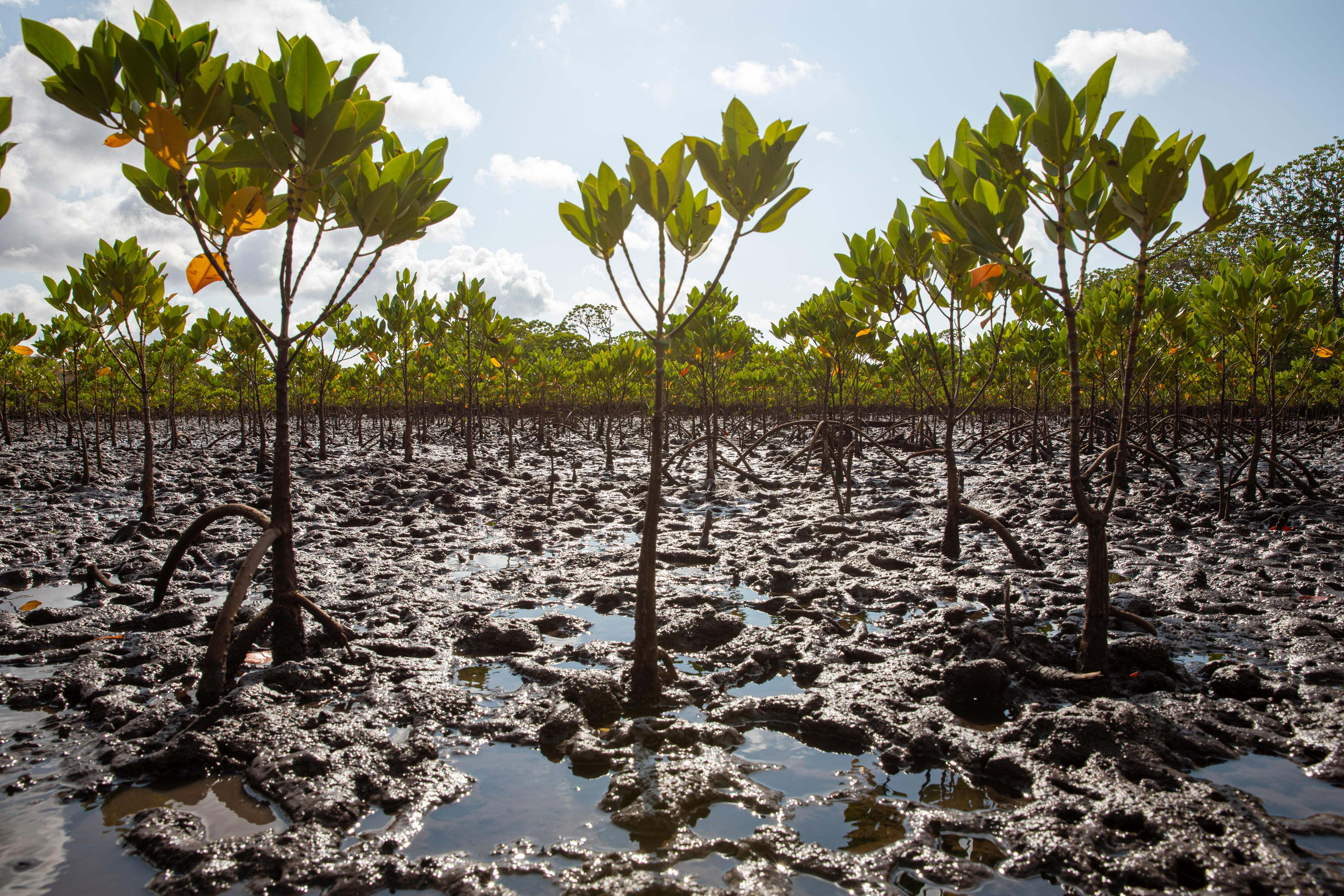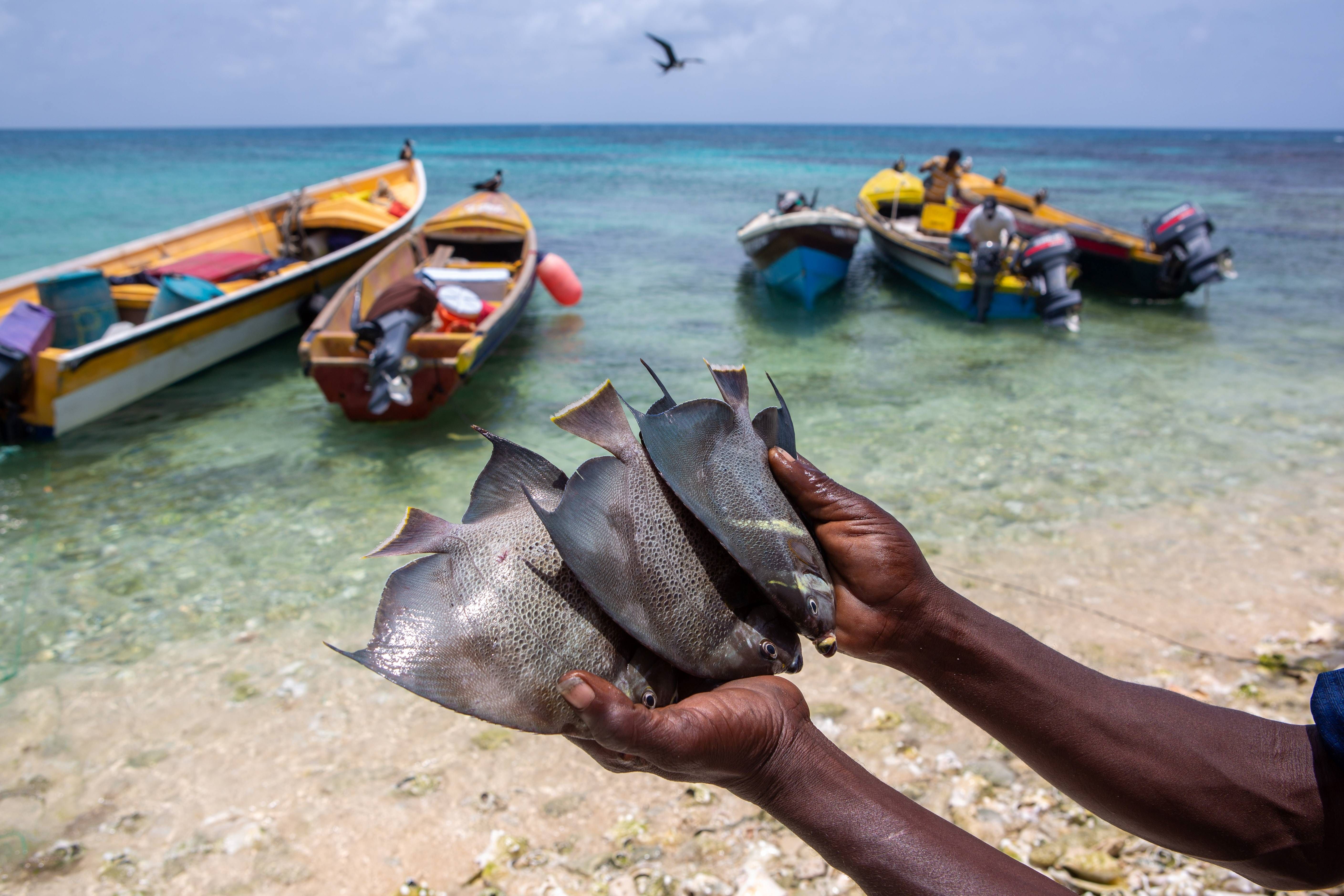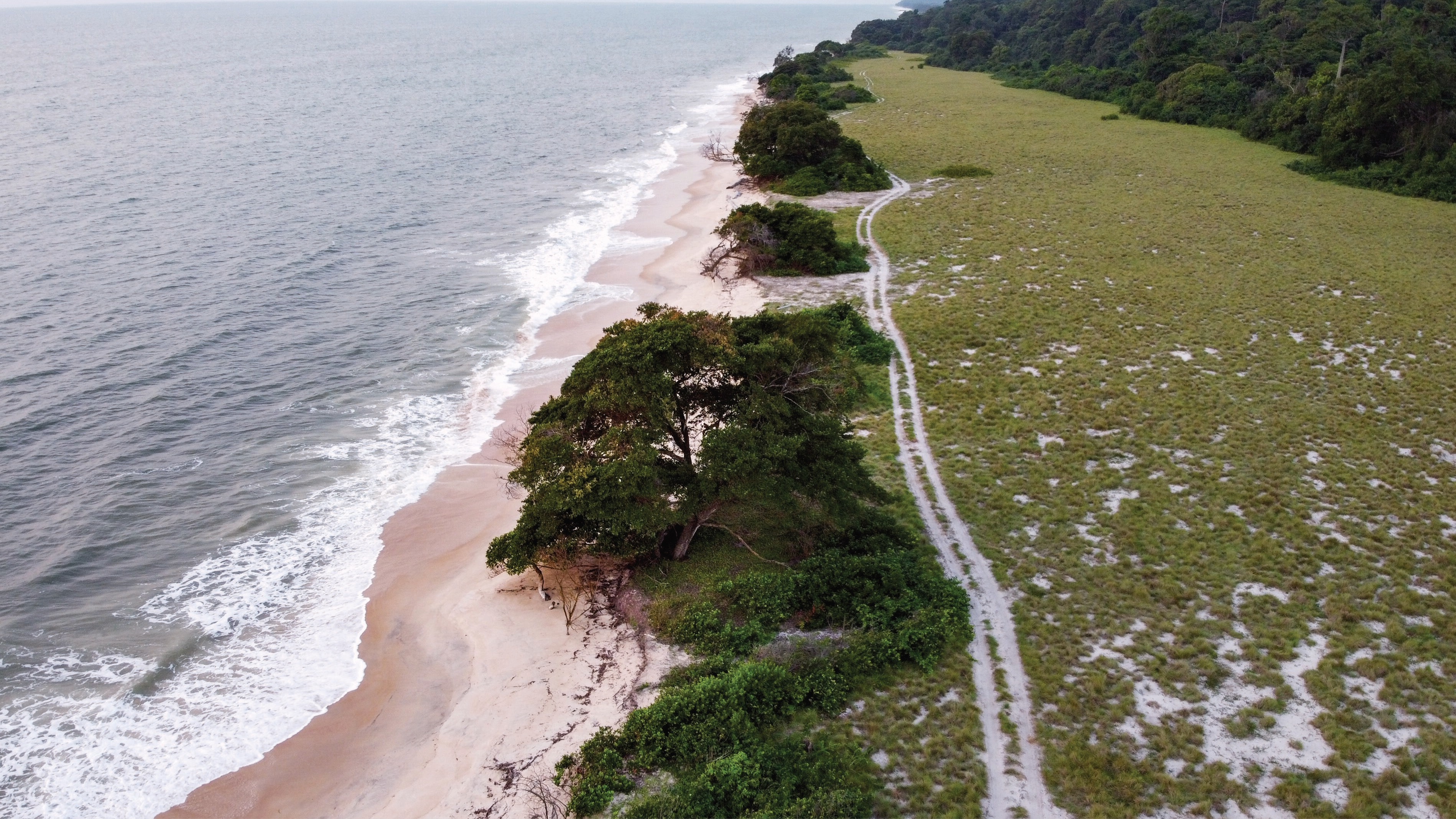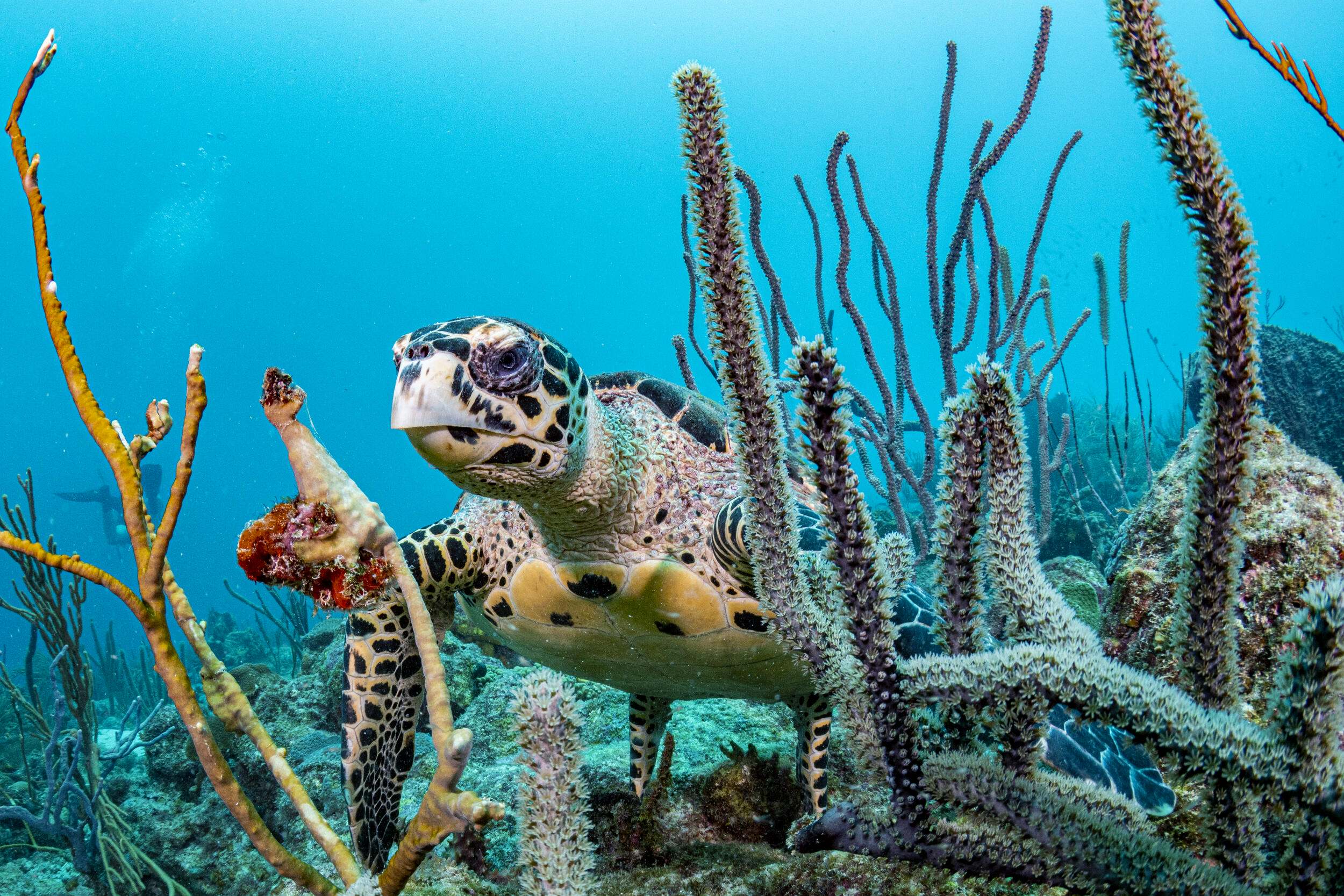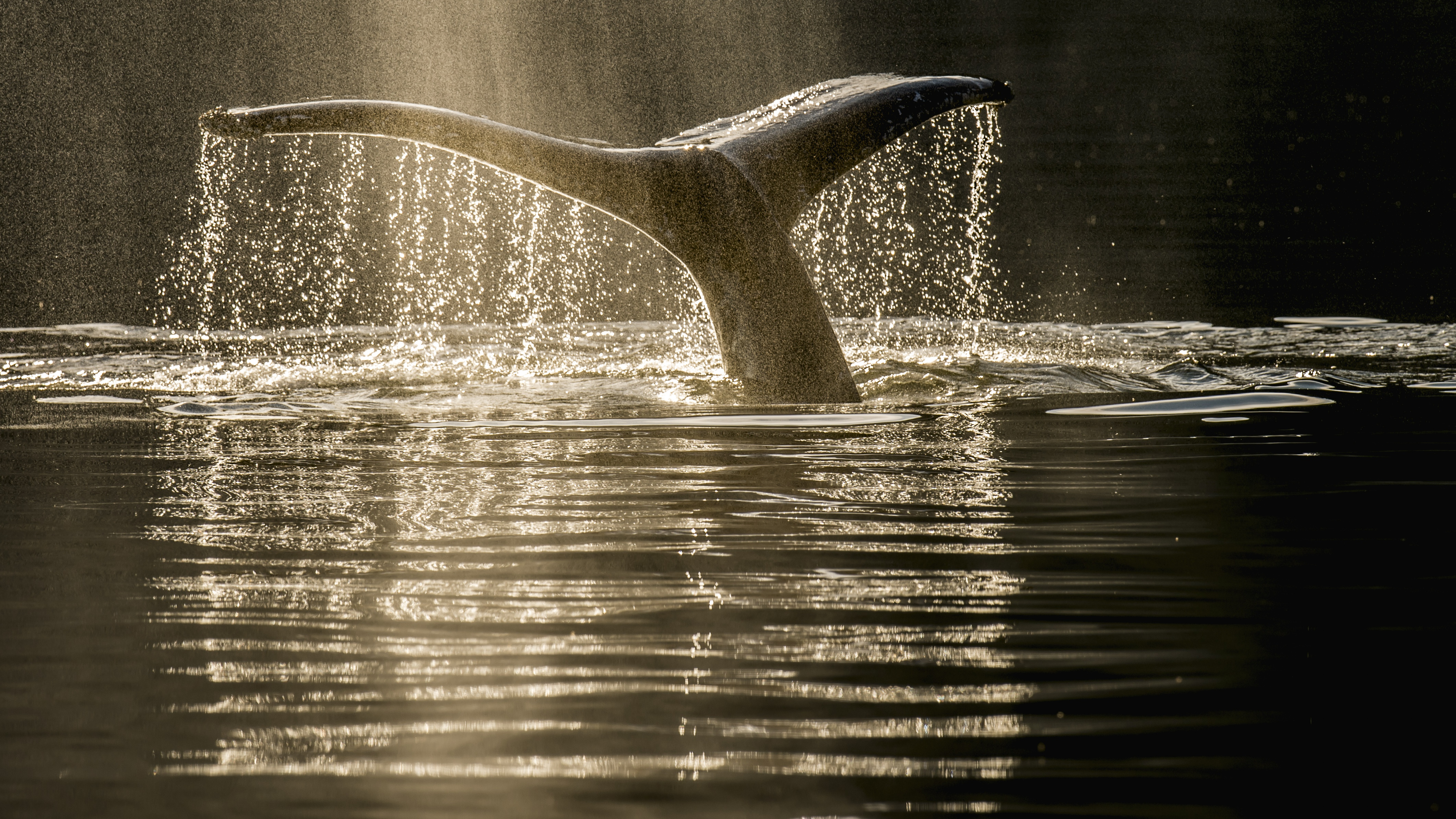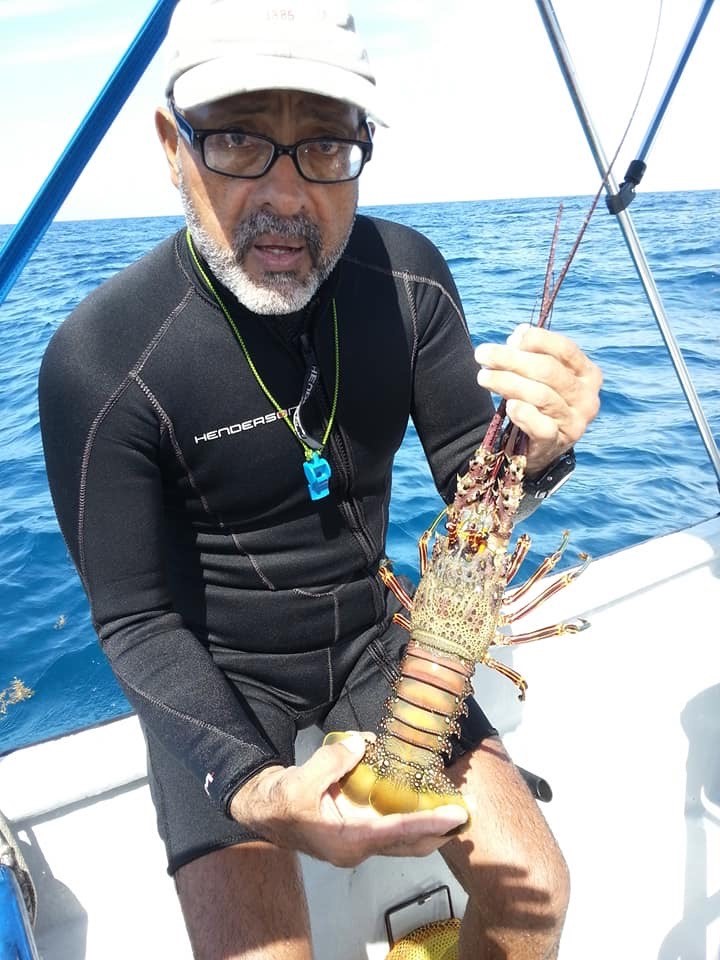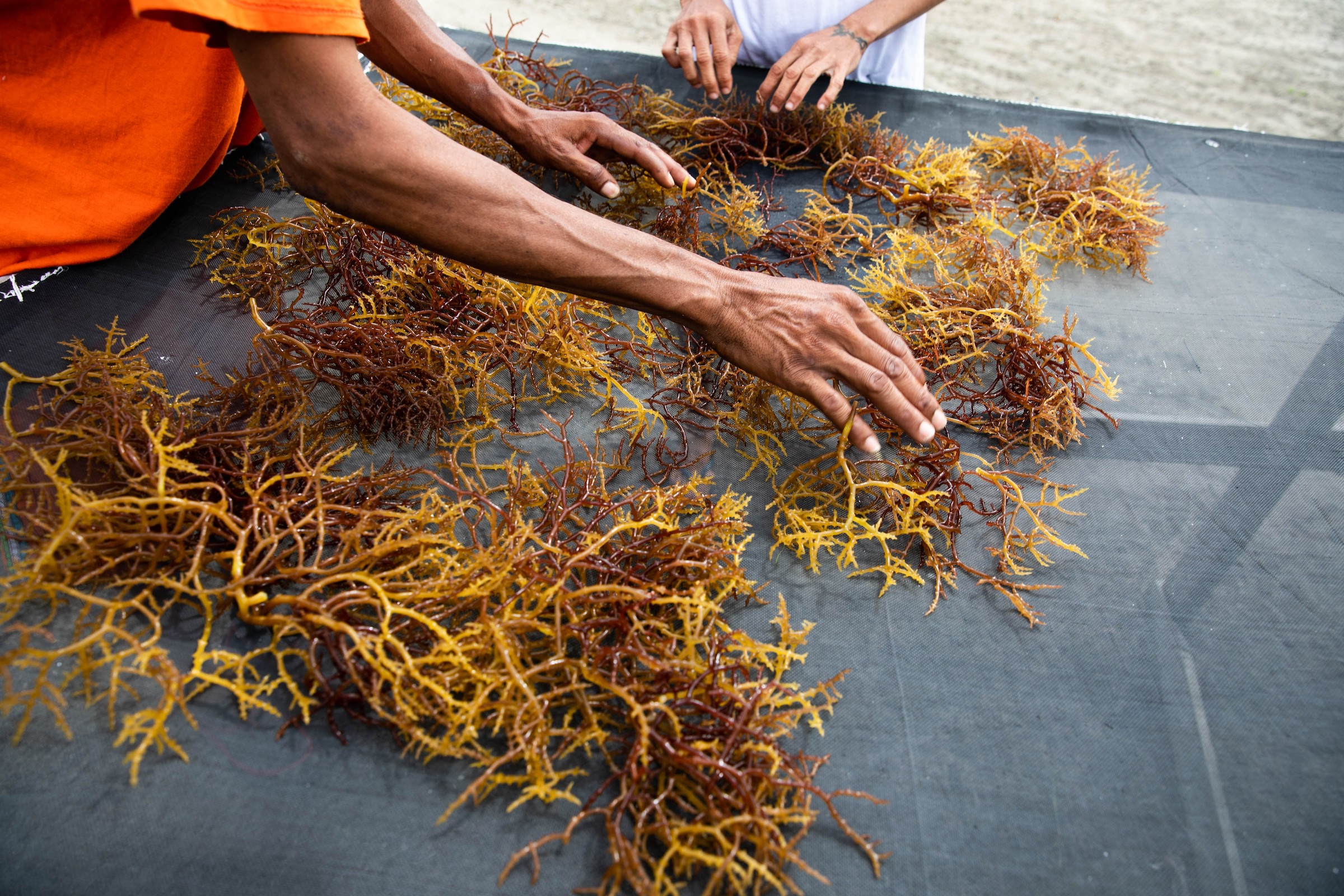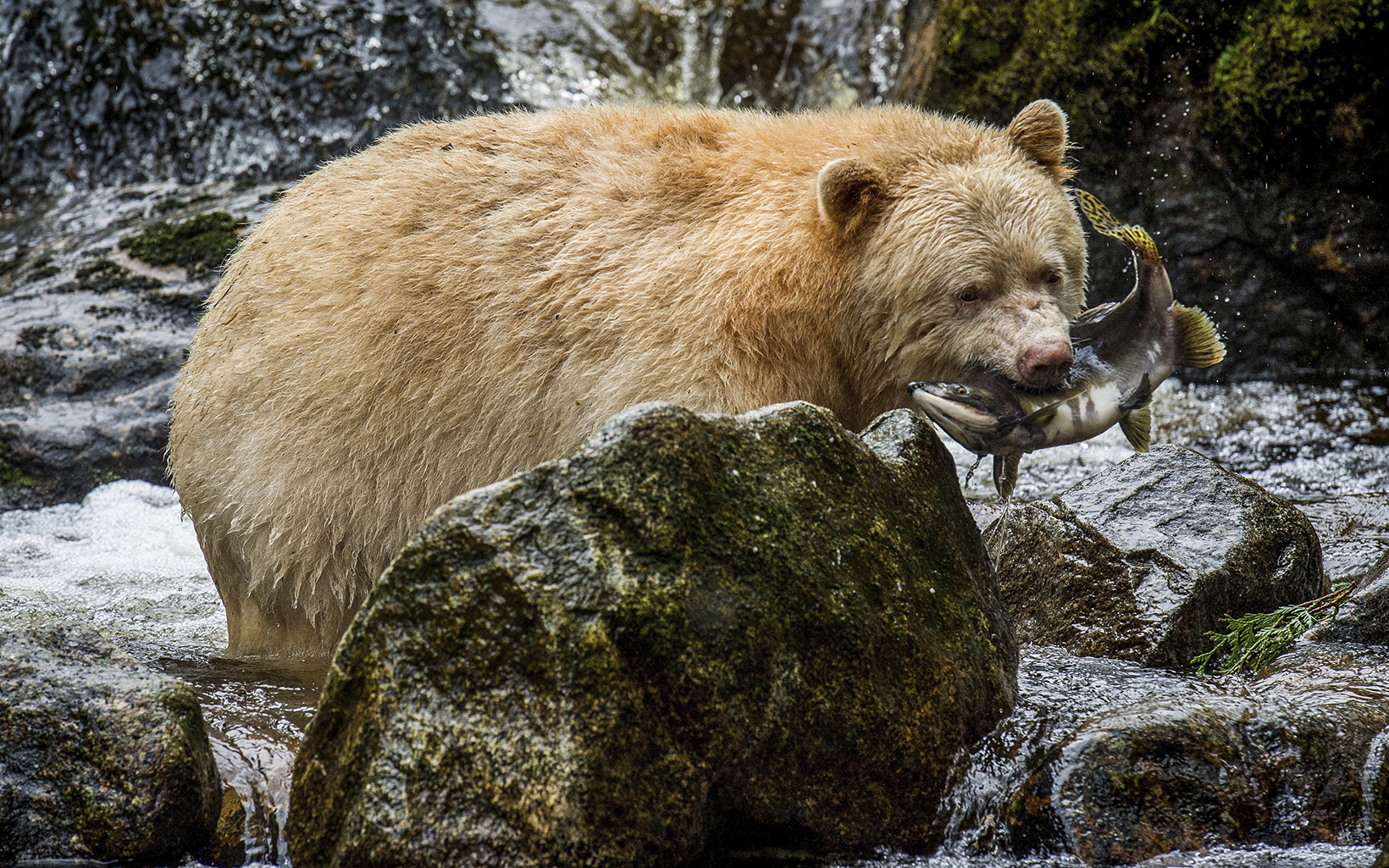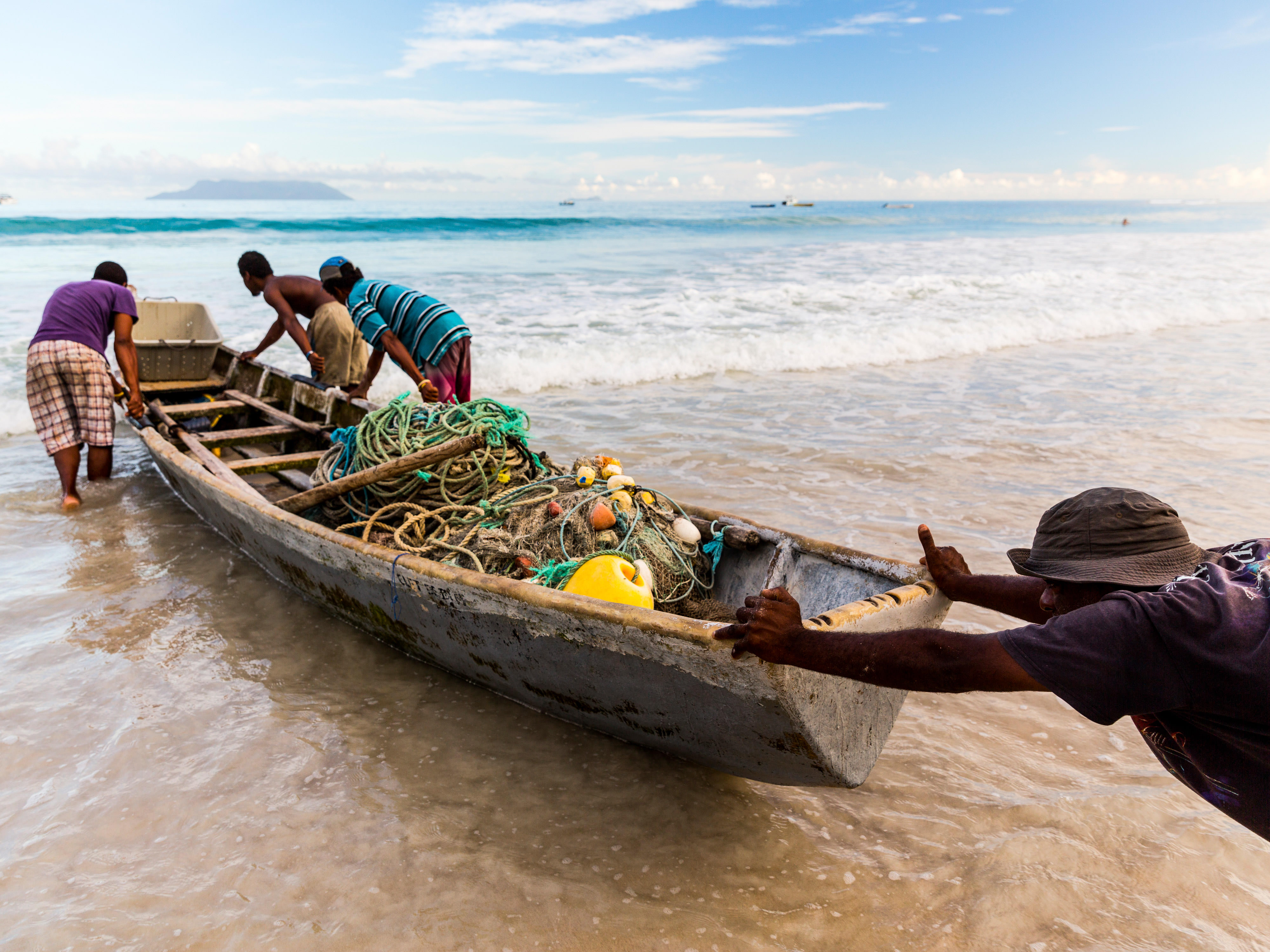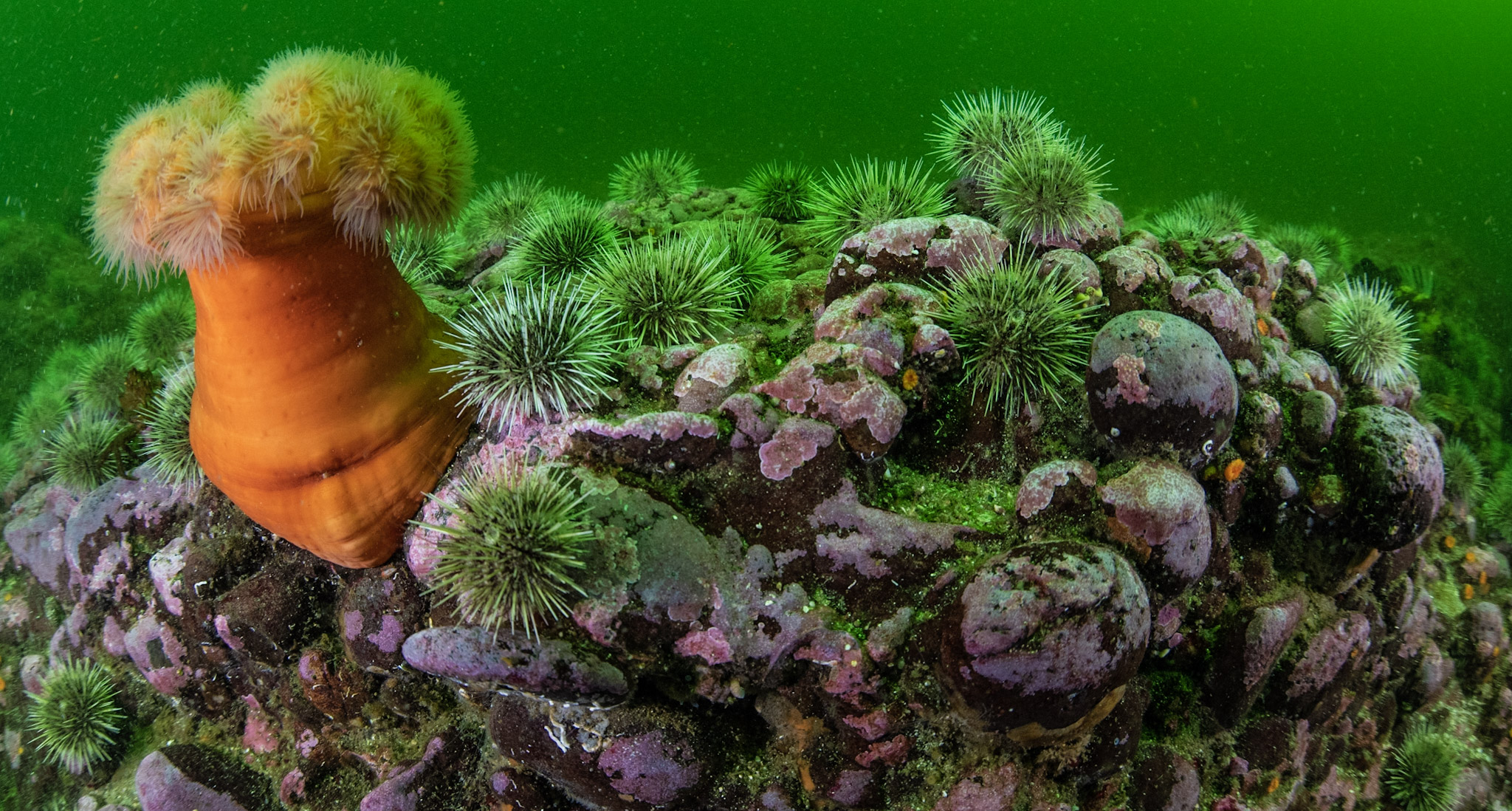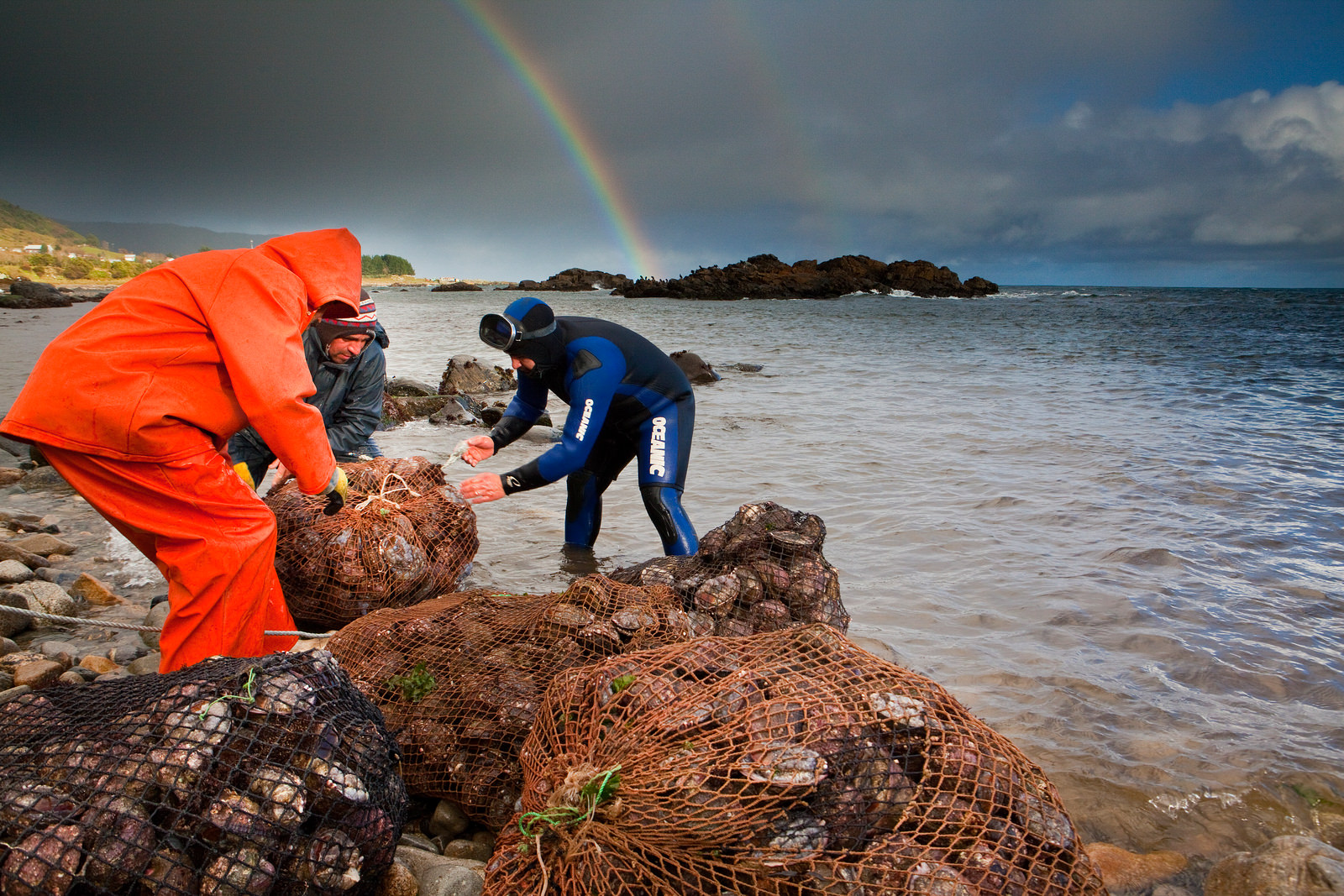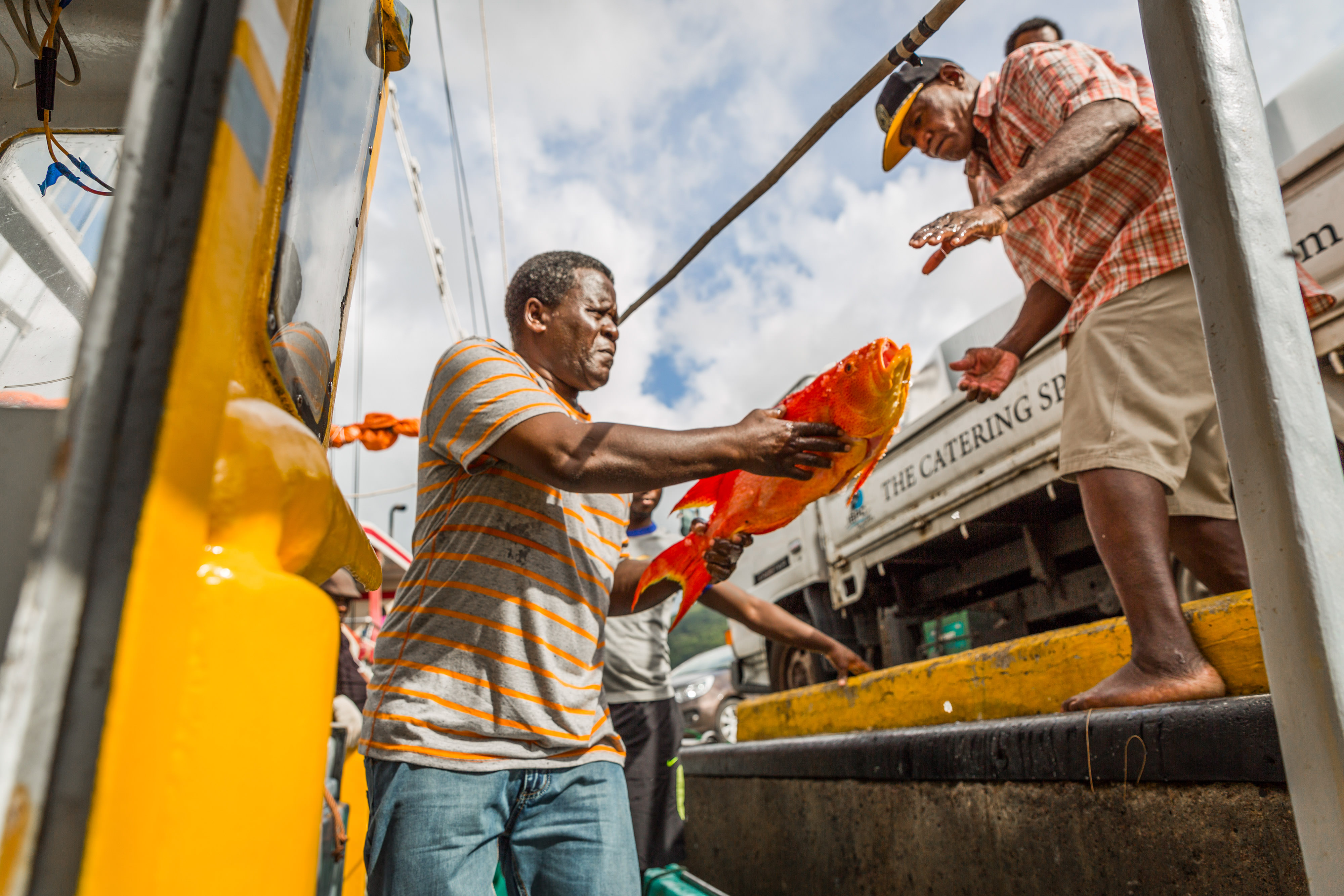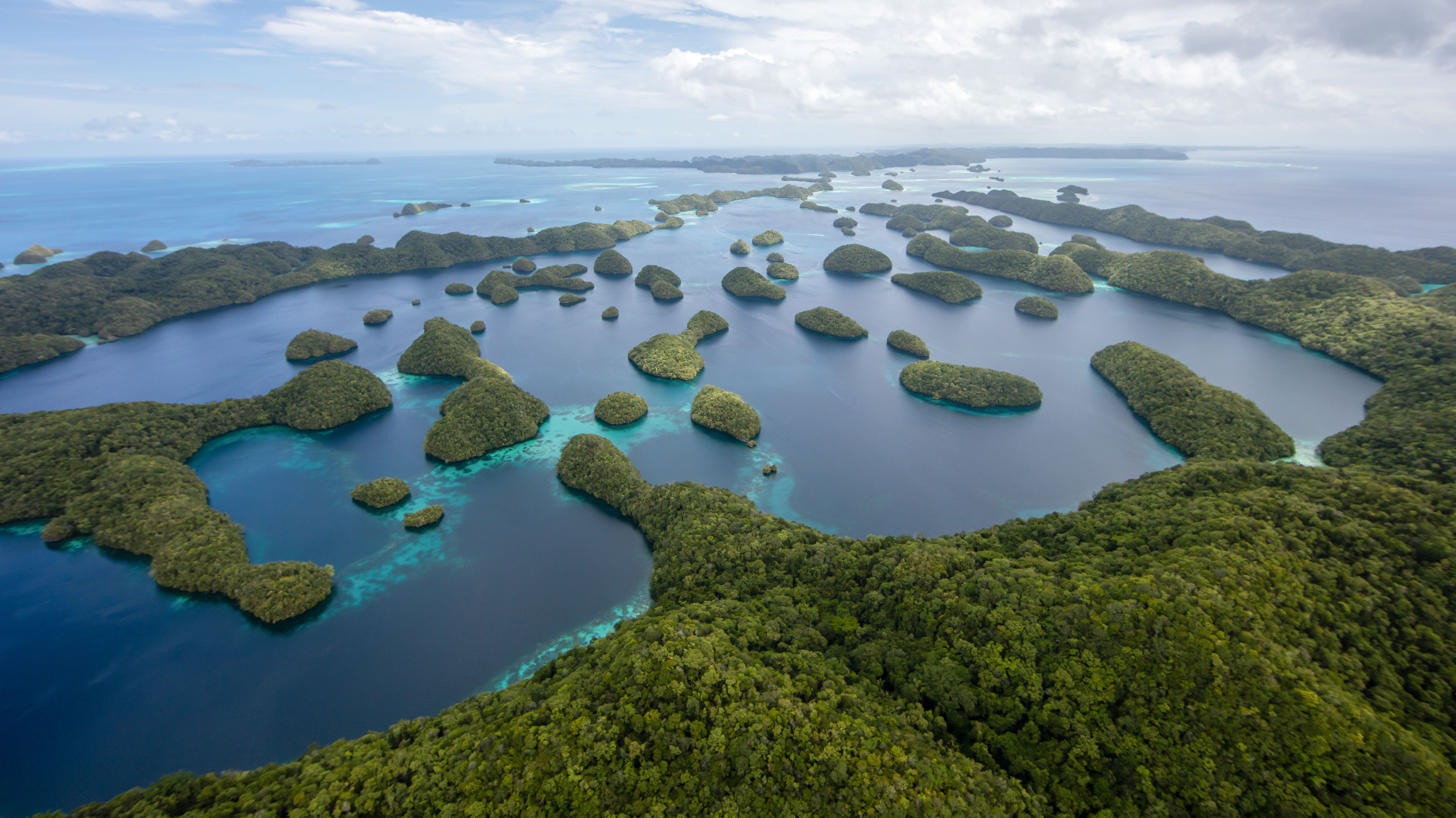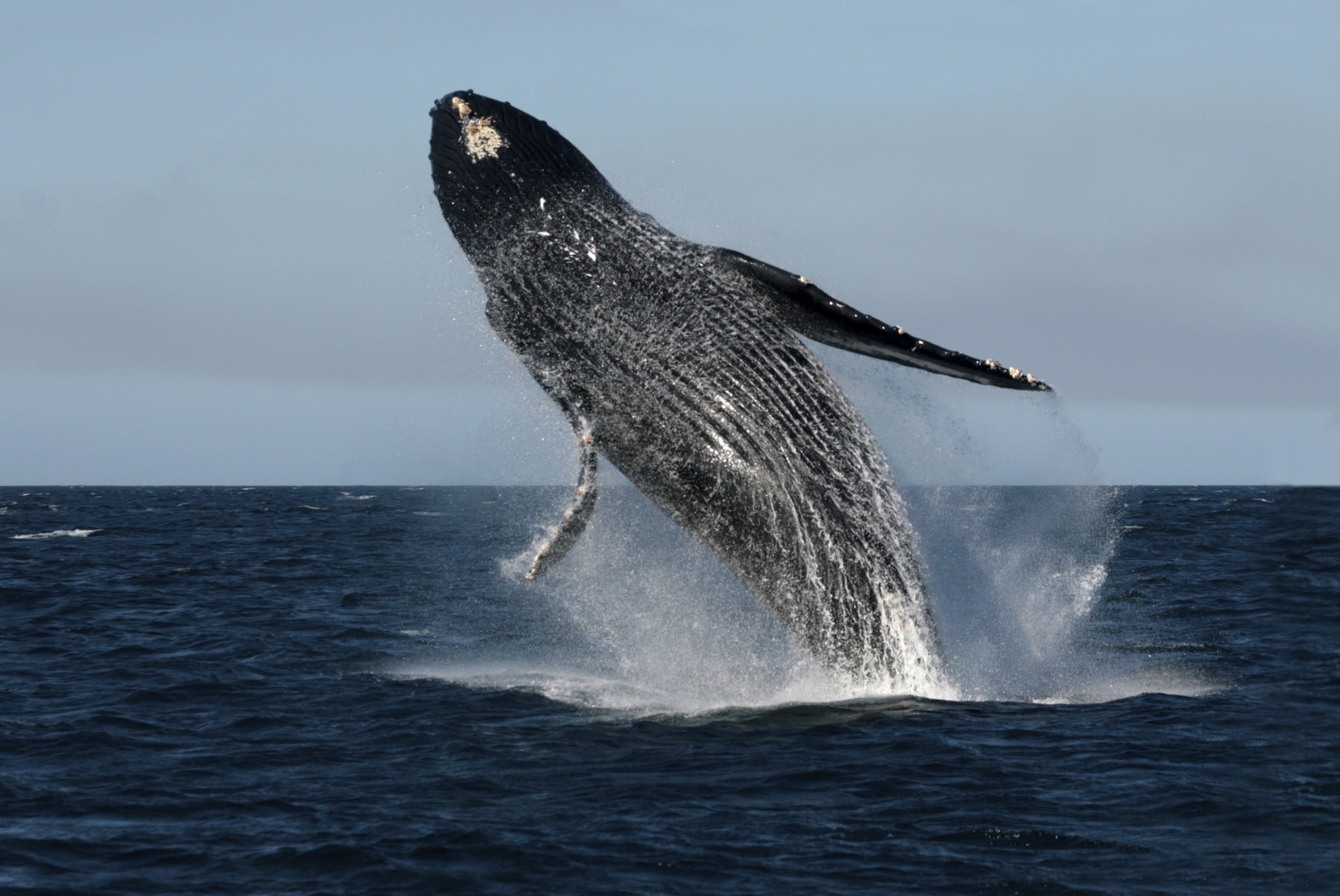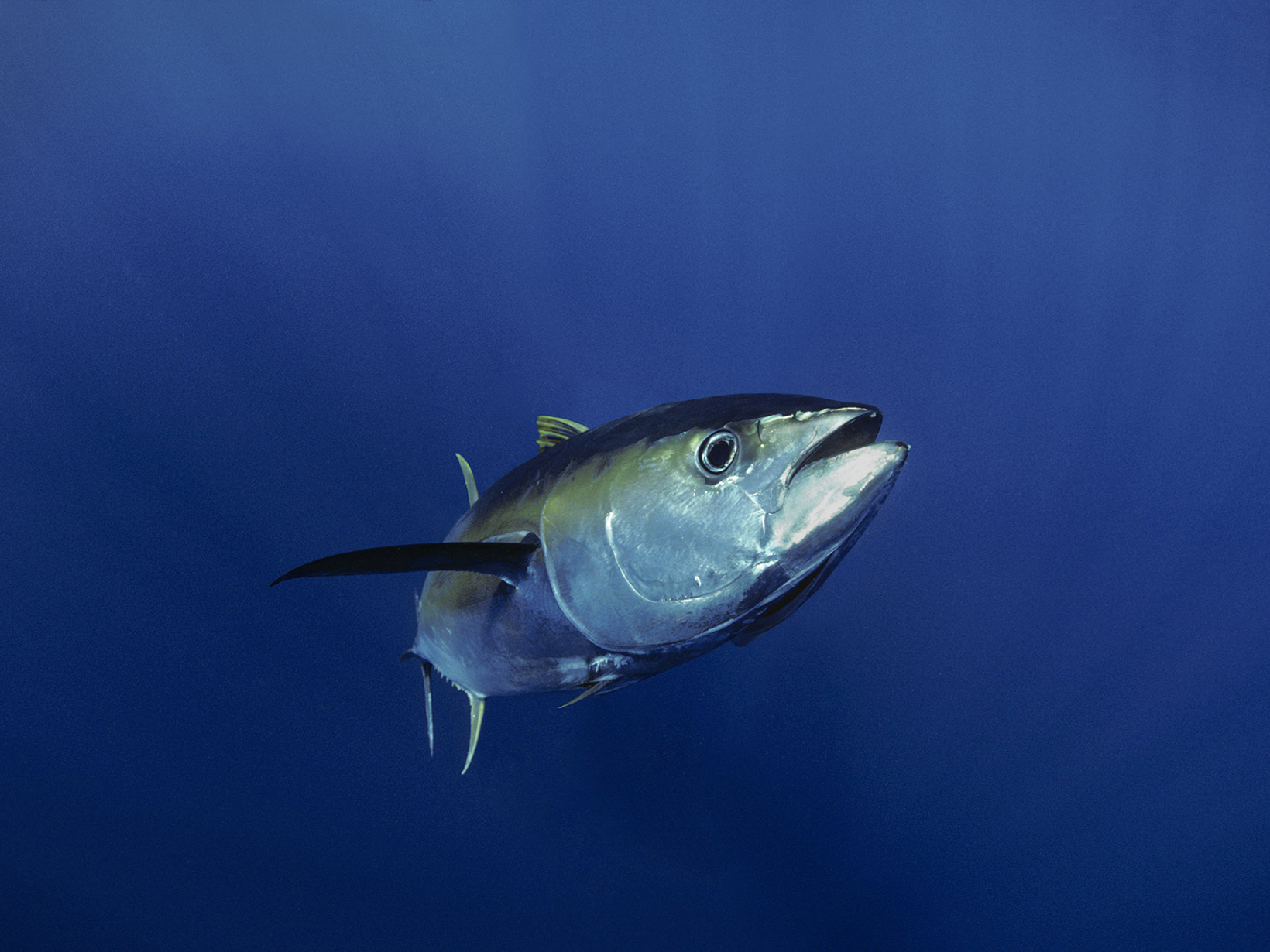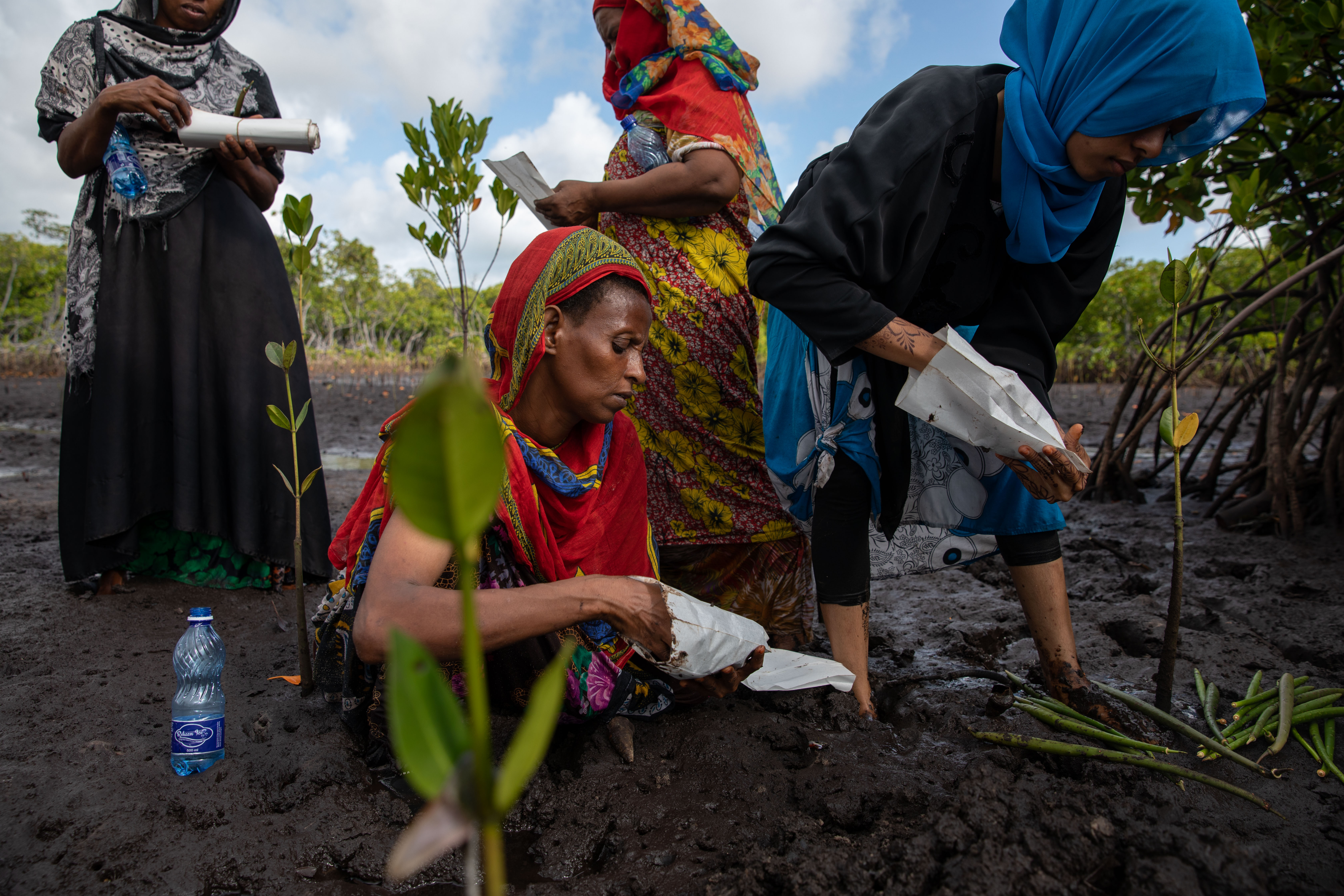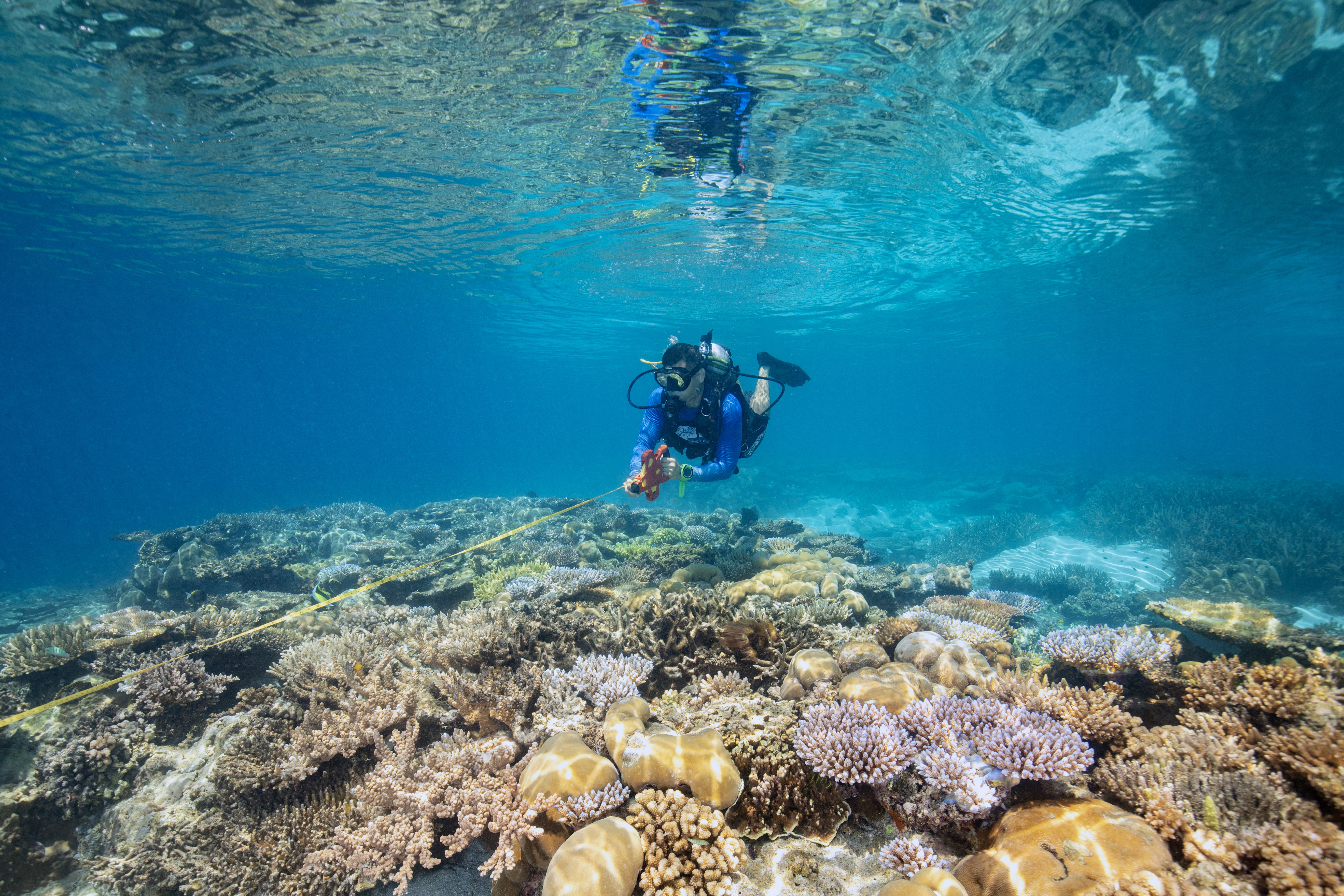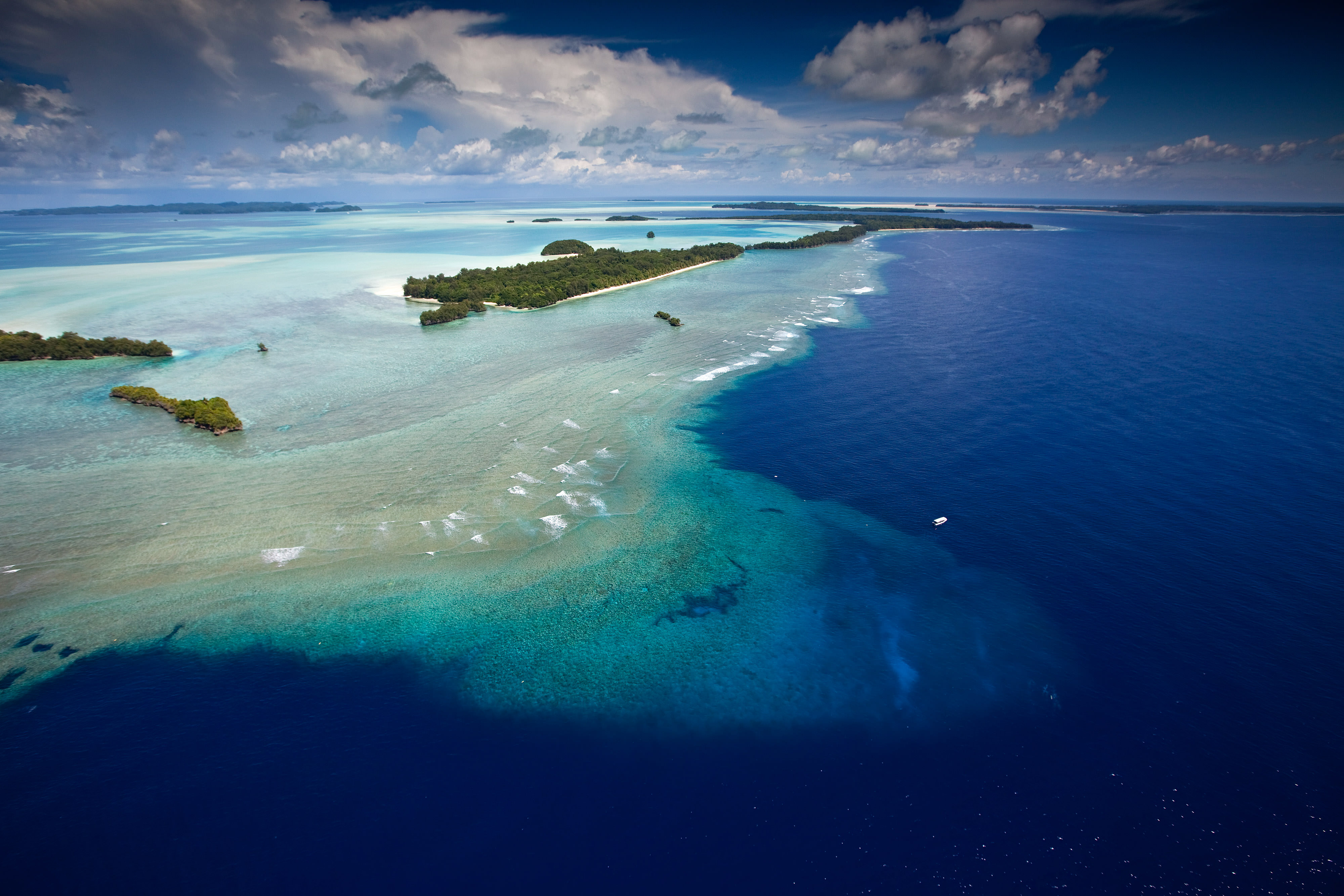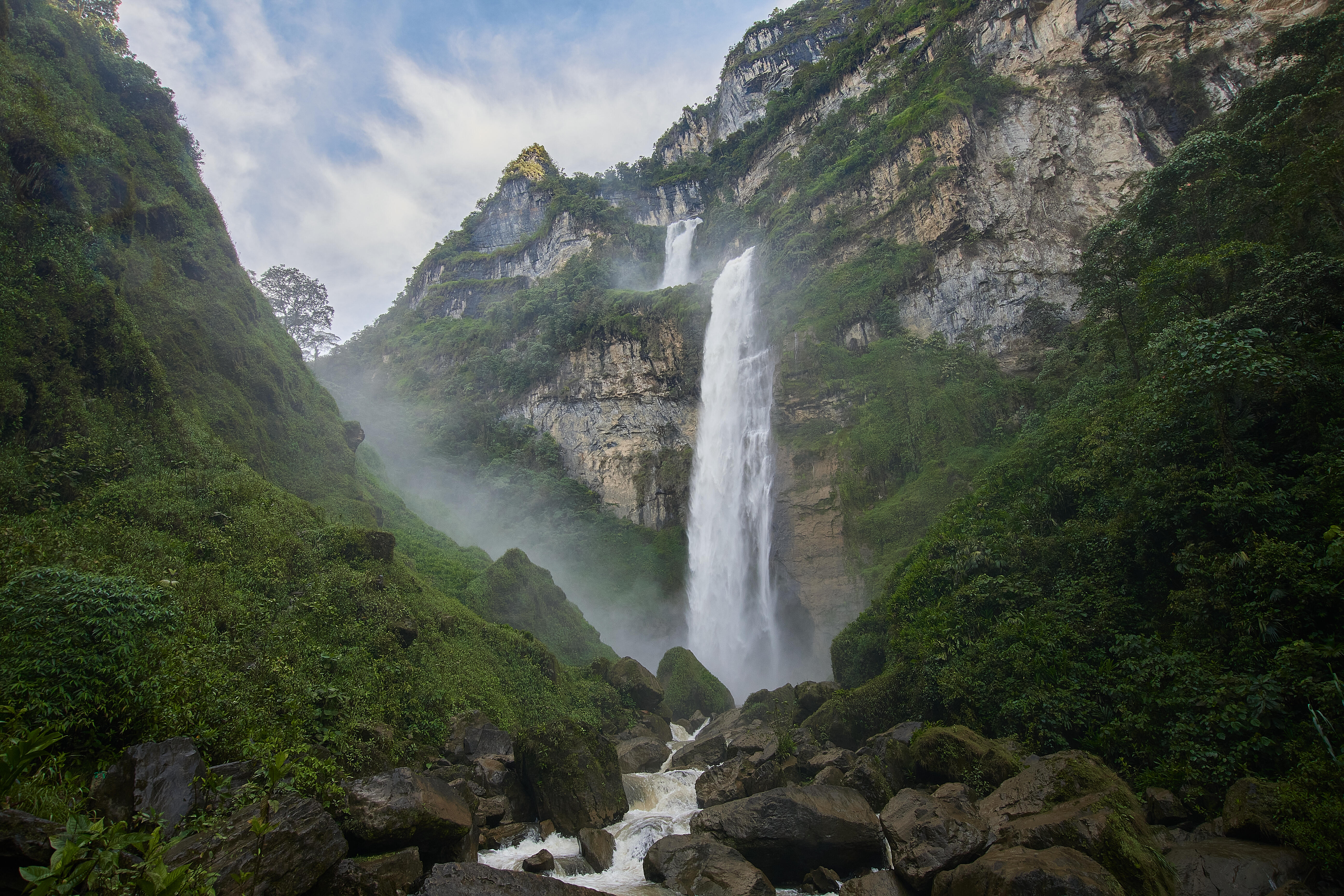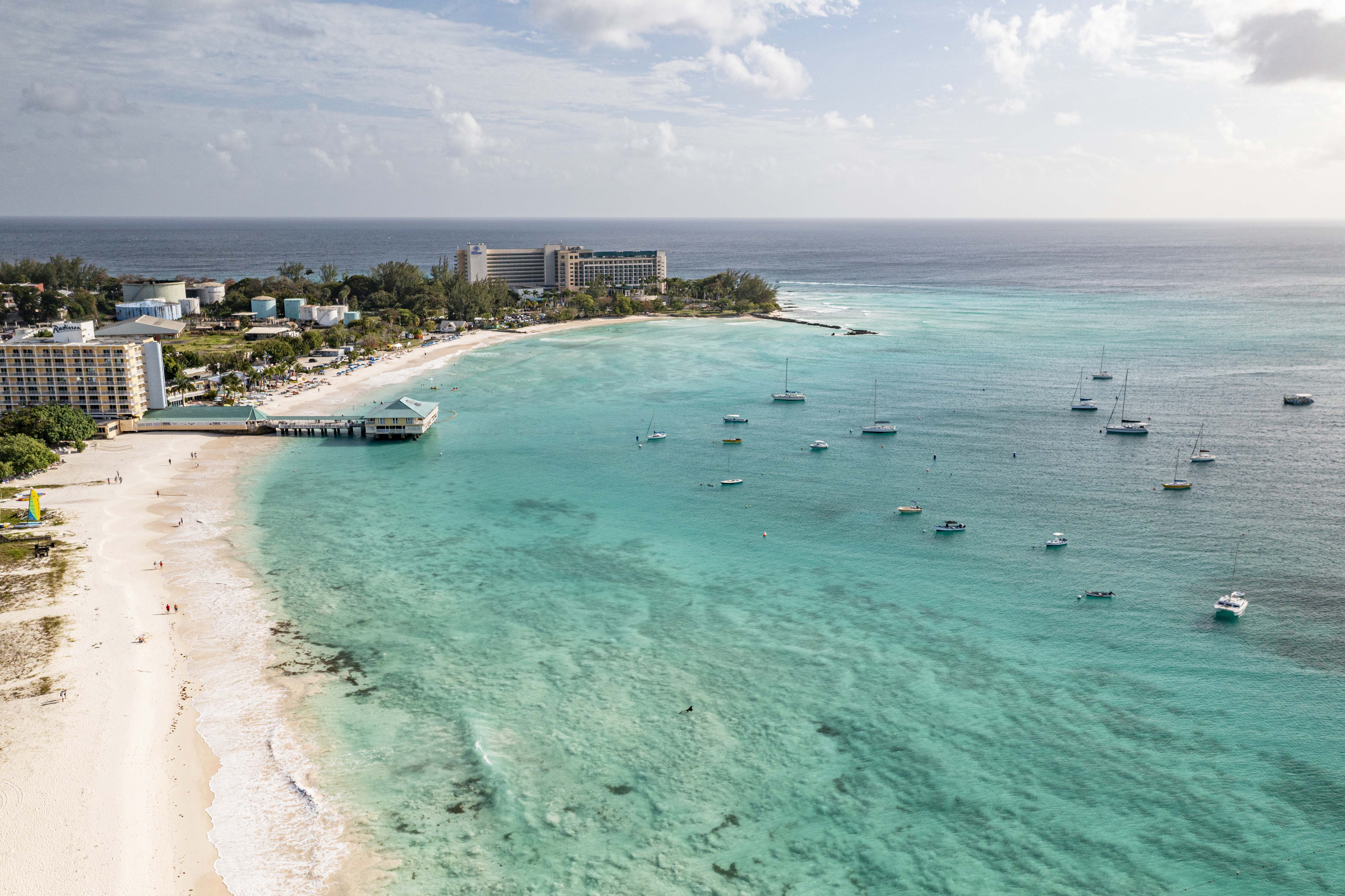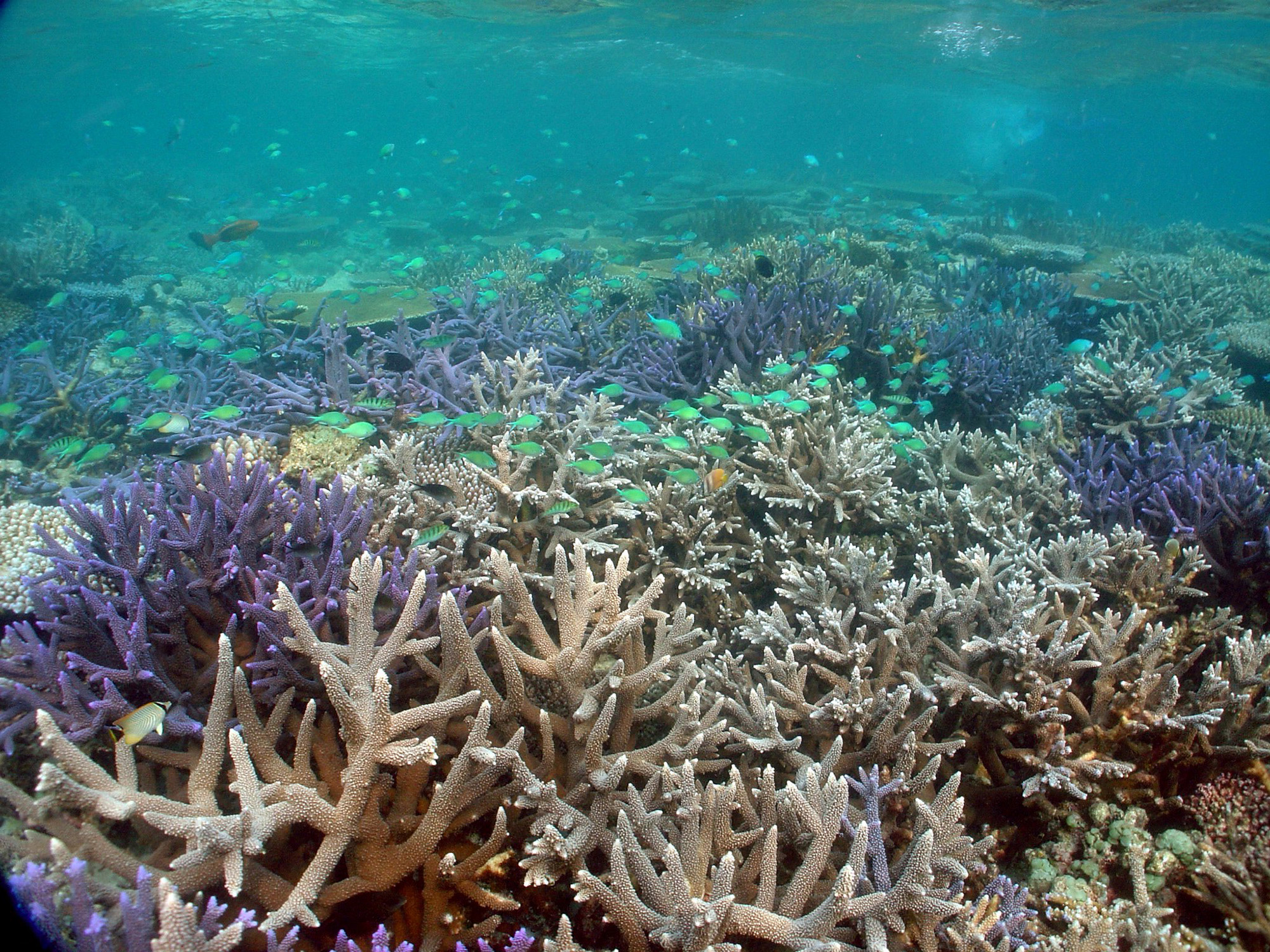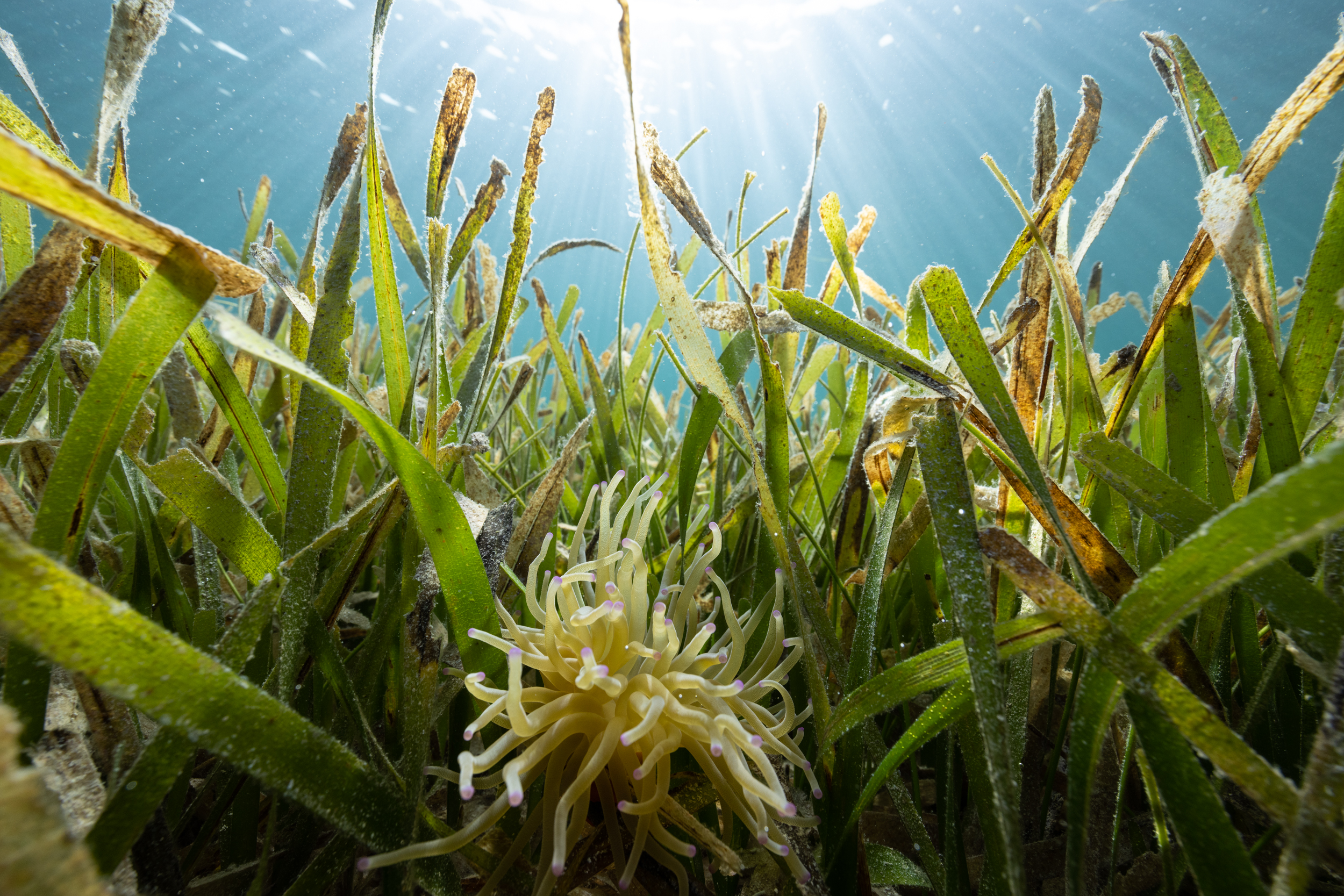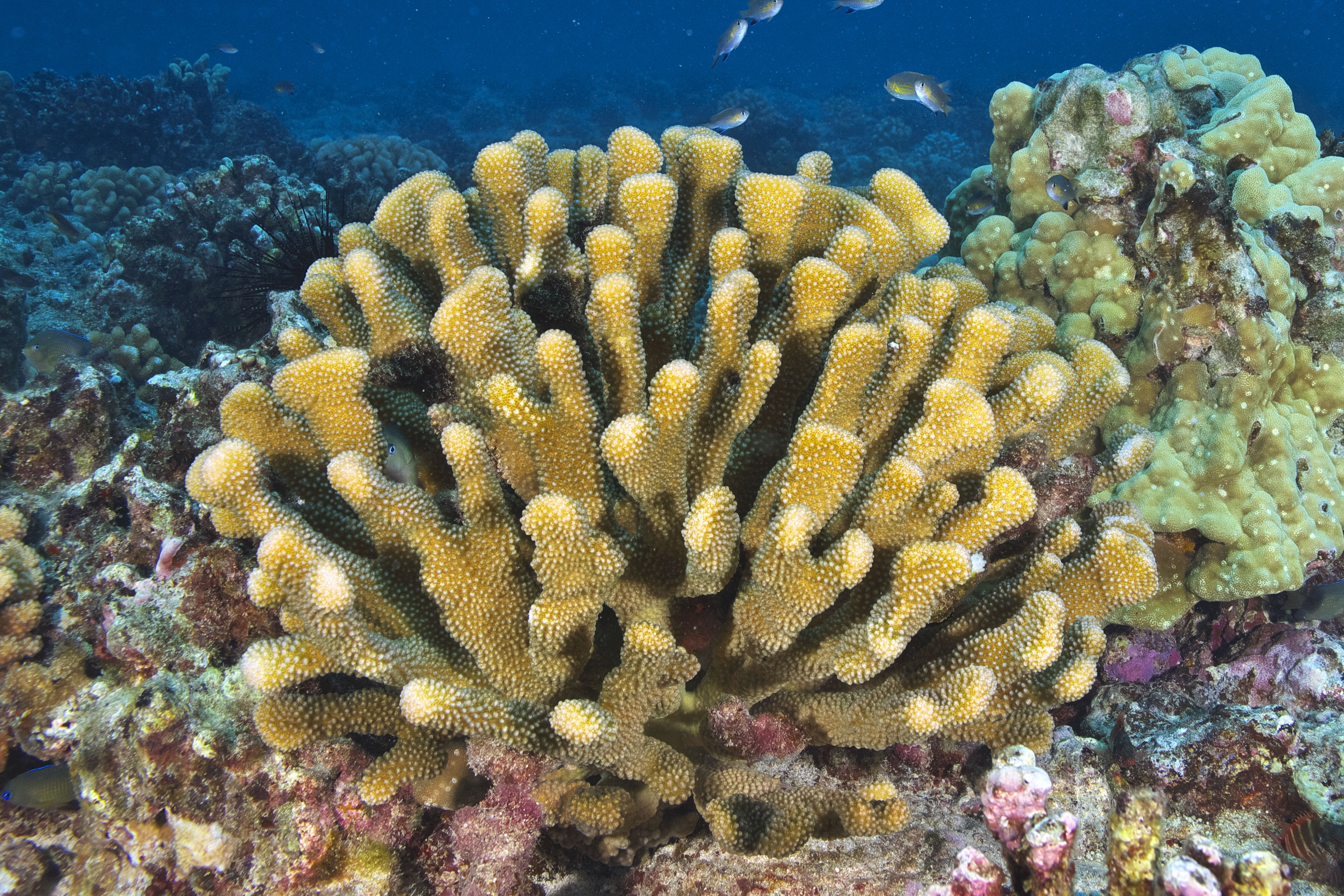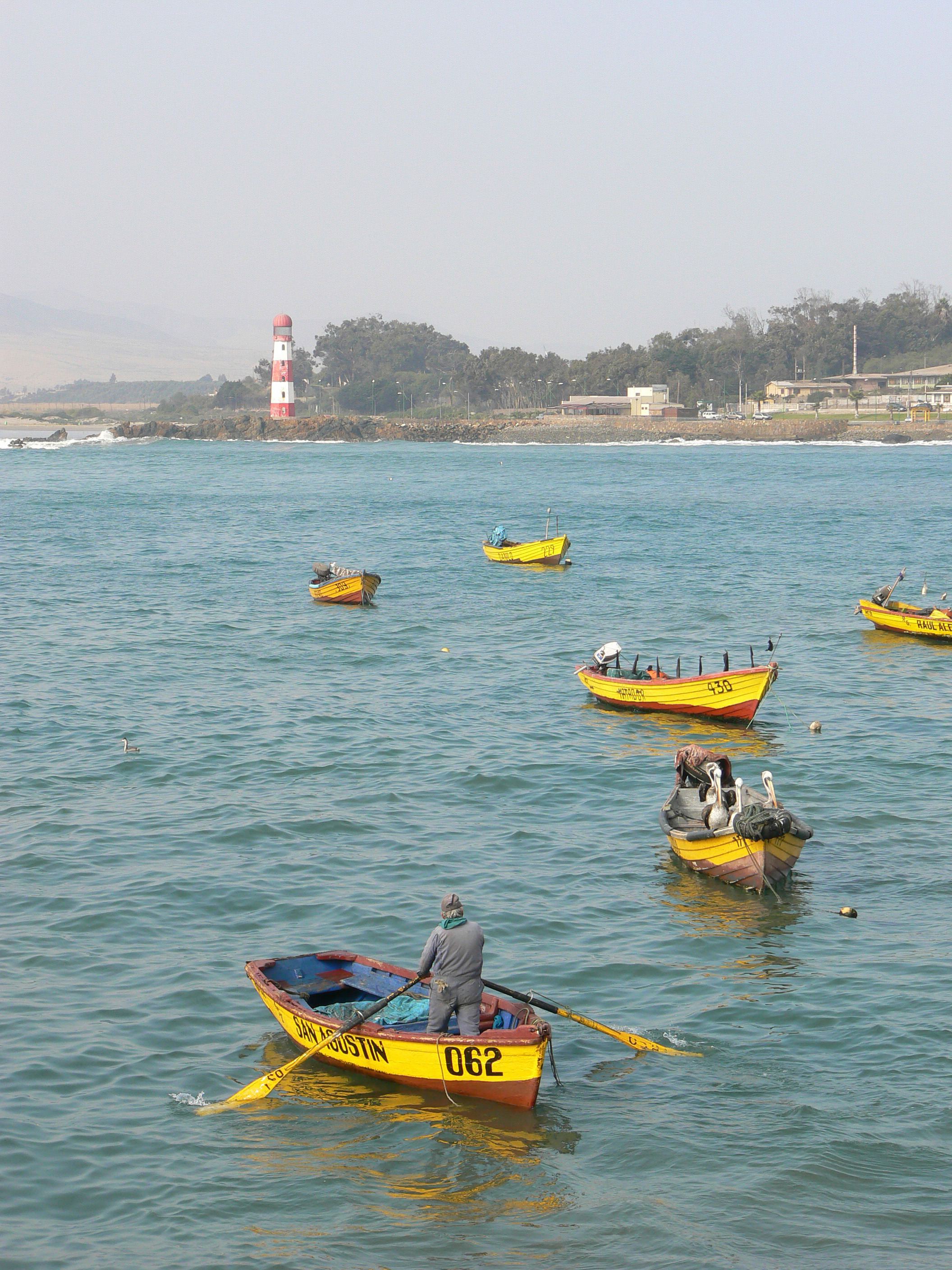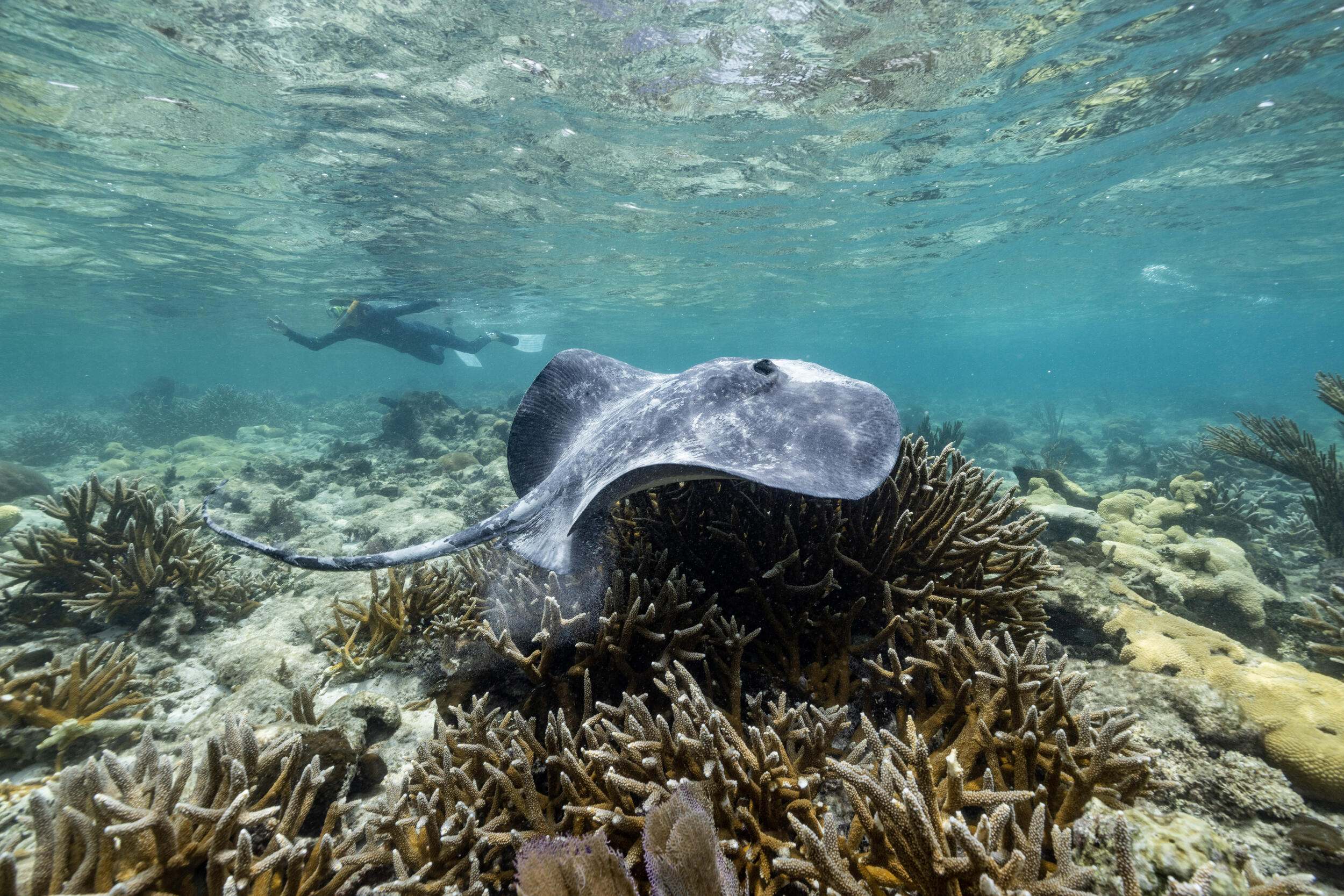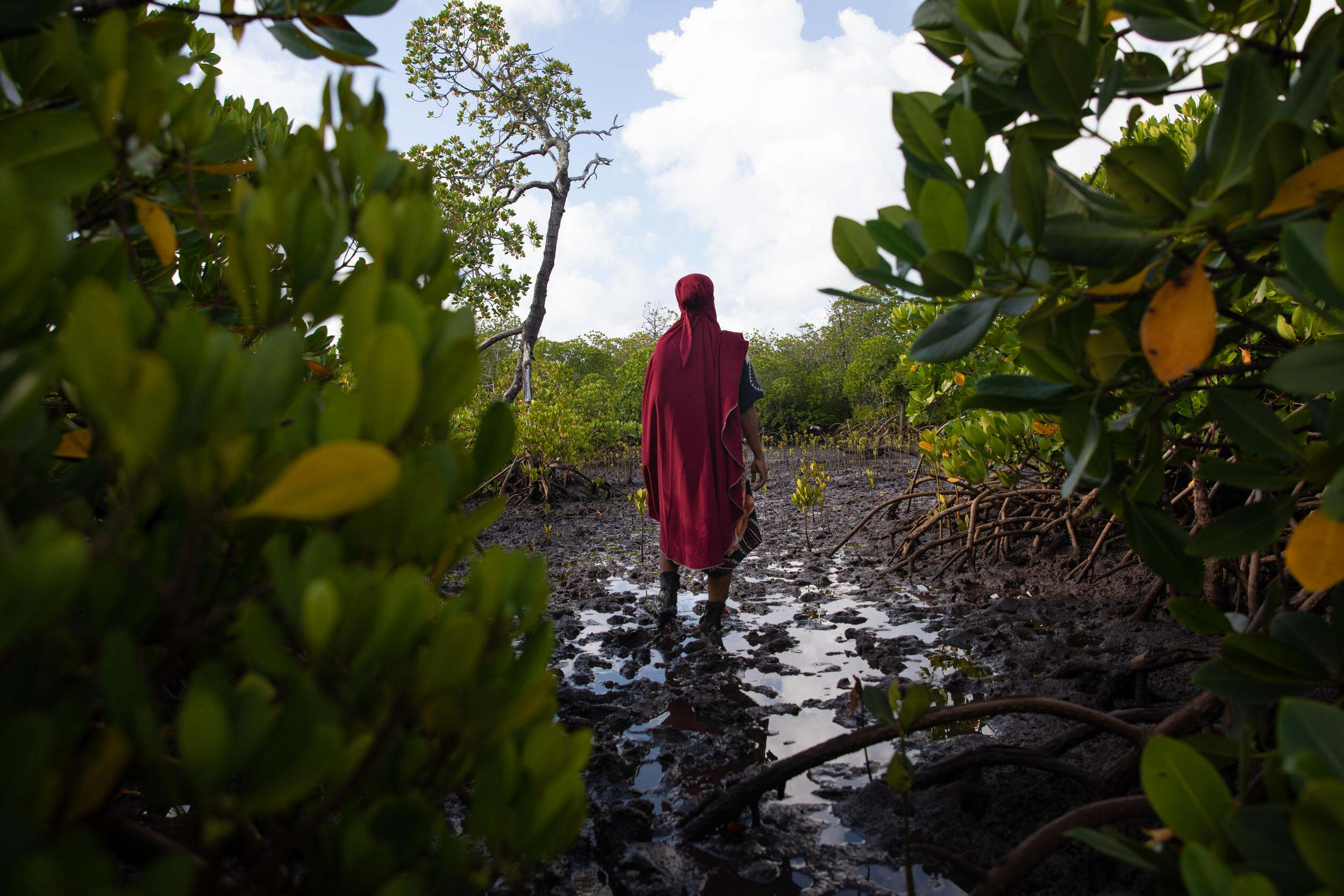Conserving Our Ocean
The ocean’s future is our future. We must relieve the pressure on the ocean so it can continue to sustain us.

Why is the ocean so important?
Covering more than 70% of Earth’s surface, the ocean plays an essential role in each of our lives, no matter where we live. The ocean is the heart of our planet, pumping oxygen, nutrients, water and weather around the globe. This constant circulation directly and indirectly provides the food and water we need to live and forms the backbone of our economies.
Stats Out of the Blue
-
1/2
Half of the oxygen we breathe comes from the natural processes of ocean plankton. That’s every other breath.
-
90%
Since the Industrial Revolution, the ocean has absorbed about 90% of the excess heat in our atmosphere.
-
3 B
More than 3 billion people depend on fish and other ocean species for food and income.
-
8%
Only 8% of the ocean is legally protected.
Our Ocean Priorities in Practice
To learn more, click a pin on the map or a tile in the list of featured initiatives. You can also toggle the legend by category. Please note: While this map is mobile-friendly, it is best experienced on desktop or tablet.
Featured Initiatives
No results are shown. To see results, turn on the toggle switches in the legend.
- Climate Adaptation in Kenya
-
Climate Adaptation in Kenya
Strengthening Climate Resilience
Kenya's coastal mangrove forests store carbon and buffer communities from storms. TNC works to restore these ecosystems while enhancing local livelihoods. In northern Kenya, we support grazing plans that increase grassland resilience and sustain livestock and wildlife across increasingly variable wet and dry seasons. We also support replicating water funds to safeguard water supplies for people.
- Insuring Nature for the Mesoamerican Reef
-
Insuring Nature for the Mesoamerican Reef
Strengthening Climate Resilience
The Mesoamerican reef—the world’s 2nd largest—serves as a natural buffer against storms along the Yucatan Peninsula. To protect and restore this vital coastal ecosystem, TNC collaborates with communities, governments and insurance companies to co-design and develop innovative financial mechanisms—such as insurance that funds restoration after storms and debt restructuring to finance conservation.
- Climate-Smart Ocean Management in the Caribbean
-
Climate-Smart Ocean Management in the Caribbean
Strengthening Climate Resilience
The Caribbean is one of the world’s most climate-vulnerable regions. TNC with partners in the Dominican Republic, Grenada and Jamaica and the International Federation of Red Cross and Red Crescent Societies work to develop and implement national plans for a sustainable future focusing on nature-based solutions for a comprehensive disaster and climate risk management.
- World-Leading Protection in Gabon
-
World-Leading Protection in Gabon
Protecting and Restoring
Gabon's vast, intact forests, fresh waters and ocean habitats harbor astounding biodiversity, including half of all forest elephants, critically endangered gorillas, electric fish, humpback whales and more. TNC is deploying conservation and sustainable financing tools to help the country meet its goal of being the first in the world to protect 30% of all its land, freshwater and ocean area.
- Advancing 30x30 in the Caribbean
-
Advancing 30x30 in the Caribbean
Protecting and Restoring
In 2022, TNC helped coordinate a blue bonds debt conversion that's financing Barbados' conservation goals. Now TNC is supporting a multi-year marine spatial planning process that will assess the island’s ocean needs. The process will help Barbados optimize marine protected areas, sustainable fishing options, policy changes and other strategies to conserve up to 30% of its ocean.
- Indigenous-Led Conservation for Great Bear Sea
-
Indigenous-Led Conservation for Great Bear Sea
Protecting and Restoring
In 2024, TNC supported 17 First Nations and federal and provincial governments to launch the Great Bear Sea Project Finance for Permanence on coastal British Columbia. It supports Canada’s first (and world’s largest) Indigenous-led, -designed and co-managed Marine Protected Area network and links ocean conservation to protection of the region’s old-growth rainforests and economic development.
- Small Island Big Ocean Management
-
Small Island Big Ocean Management
Protecting and Restoring
TNC’s work across the Caribbean, Micronesia and Polynesia is powered by nature and guided by local leadership. We help island governments and communities better protect and manage ocean habitats, adopt more sustainable fishing practices and become more resilient to climate change. We developed a mobile app that helps Puerto Rican fishers sustain their livelihoods and conserve fish populations.
- Resilient Oceans and Communities in Belize
-
Resilient Oceans and Communities in Belize
Protecting and Restoring
In 2021, TNC worked with Belize's government and financial institutions to restructure the country’s debt, unlocking funds to support the country’s marine and community conservation efforts over 20 years. In 2025, Belize now has 25.05% of its total ocean space legally protected, showing steady progress toward its ambitious goal of protecting 30% of its marine area by 2026.
- Advancing 30x30
-
Advancing 30x30
Protecting and Restoring
In 2022, 190 countries adopted the Global Biodiversity Framework to protect 30% of the planet’s ocean, lands and fresh water by 2030, the biggest conservation commitment the world has ever seen. Now, TNC is supporting countries around the world to deliver 30x30 funding, policy and conservation action—with strong progress in Canada, Mongolia, Australia, Colombia and more.
- Advancing Nature Bonds
-
Advancing Nature Bonds
Protecting and Restoring
TNC has supported six developing countries to leverage debt refinancing to pay for conservation and climate action. Initially dubbed “Blue Bonds projects,” the recently expanded Nature Bonds Program now includes terrestrial and freshwater outcomes and has helped unlock approximately $1 billion for conservation progress in Seychelles, Belize, Barbados, Gabon, The Bahamas and Ecuador.
- PFPs and Enduring Earth
-
PFPs and Enduring Earth
Protecting and Restoring
Project Finance for Permanence is a globally tested model for long-term, large-scale conservation and community development investment that brings governments, partners, funding and comprehensive planning together to support lasting conservation benefits. Through the Enduring Earth partnership, TNC is supporting initiatives in Canada, Mongolia and elsewhere.
- Thriving Fisheries in Micronesia
-
Thriving Fisheries in Micronesia
Thriving Fisheries and Aquaculture
In 2024, TNC launched the Tuna Transparency Pledge, with the Federated States of Micronesia, Belize, Walmart, Albertsons Companies and Thai Union as the first signatories. The pledge aims for 100% on-the-water monitoring across all industrial tuna fishing vessels in signatories’ supply chains or jurisdictions by 2027, strengthening transparency and aiding management of tuna and other species.
- Conserving the Humboldt Current
-
Conserving the Humboldt Current
Thriving Fisheries and Aquaculture
The Humboldt Current is one of the planet’s richest marine environments and a top-10 fish producer. But over-exploitation is depleting the region’s ocean biodiversity. In Chile and Peru, TNC works with fishers, the seafood industry and the government to enable sustainable, conservation-friendly management of fisheries to maintain ocean biodiversity while contributing to global food production.
- Sustainable Tuna Supply with Small Islands
-
Sustainable Tuna Supply with Small Islands
Thriving Fisheries and Aquaculture
In 2021, TNC and Republic of the Marshall Islands launched Pacific Island Tuna to ensure transparency at sea and reduce bycatch of vulnerable species while supplying sustainable tuna products to large U.S. retailers, like Walmart. The effort shows how the canned tuna industry can work more sustainably and help the Marshall Islands raise revenue and prepare for climate change.
- Thriving Fisheries in Western Indian Ocean
-
Thriving Fisheries in Western Indian Ocean
Thriving Fisheries and Aquaculture
The Western Indian Ocean’s marine ecosystems are some of the world’s most biodiverse, with more than 2,200 species of fish and more than 350 species of corals. TNC is working with partners across Seychelles, Kenya and Tanzania to tackle habitat loss and degradation, improve fisheries management and address conflict over the use of marine resources.
- Thriving Fisheries in Palau
-
Thriving Fisheries in Palau
Thriving Fisheries and Aquaculture
In the Palau archipelago, investing in sustainable fisheries and aquaculture is helping the country balance food sovereignty with healthy ecosystems and economic growth. TNC, in collaboration with Palau's government, has developed a new tool that maps out the best locations for new aquaculture. TNC is also engaging with the fishing industry to improve management and traceability.
- Gulf of California Iconic Place
-
Gulf of California Iconic Place
Thriving Fisheries and Aquaculture
The Gulf of California is among the world's most biodiverse seas, hosting more than 900 fish species and 30% of all marine mammals. This natural treasure represents both ecological abundance and economic potential. TNC collaborates with local fisheries, authorities and buyers to create sustainable, economic and equitable solutions that benefit the marine environment and fishing communities alike.
- Aquatic Food Supply Chain
-
Aquatic Food Supply Chain
Thriving Fisheries and Aquaculture
With 2/3 of global fisheries overfished or unable to sustain pressure, it is critical to improve seafood fishing and farming. Enter efforts like TNC’s Tuna Transparency Pledge—a global initiative to achieve 100% on-the-water monitoring on all industrial tuna vessels by 2027. Signatories already include Belize, Micronesia, Walmart, Albertsons Companies and Thai Union.
- Human Rights-based Conservation: Africa
-
Human Rights-based Conservation: Africa
Protecting and Restoring
Human Rights, Gender and Equity: For our planet to thrive, people and communities must be at the forefront of conservation. TNC is integrating human rights, gender and equity into our principles and practices to influence positive change in conservation. An example is our work with communities in Kenya's Lamu Archipelago to protect, manage and restore priority mangrove habitats.
- Leveraging Science: Australia
-
Leveraging Science: Australia
Protecting and Restoring
Leveraging Science: Organizations, governments and communities around the world rely on TNC’s world-class science for innovative solutions to the climate and biodiversity crises. One example is our collaboration with Marxan’s open-source spatial planning platform to manage and protect Australia’s iconic Great Barrier Reef.
- Leveraging Science: Palau
-
Leveraging Science: Palau
Thriving Fisheries and Aquaculture
Leveraging Science: Organizations, governments and communities around the world leverage TNC’s world-class science for innovative nature-based solutions to the climate and biodiversity crises. One example is in Palau, where GIS mapping is identifying the best locations for new aquaculture projects.
- Strengthening Policy & Public Funding: 30x30
-
Strengthening Policy & Public Funding: 30x30
Protecting and Restoring
Policy & Public Funding: In 2022, 190 countries adopted the Global Biodiversity Framework to protect 30% of the planet’s ocean, lands and fresh water by 2030, the biggest conservation commitment the world has ever seen. Now, TNC is supporting countries around the world to deliver 30x30 funding, policy and conservation action—with strong progress in Mongolia, Australia, Canada, Colombia and more.
- Impact Finance & Markets: Nature Bonds
-
Impact Finance & Markets: Nature Bonds
Protecting and Restoring
TNC has supported six countries to leverage debt refinancing to pay for conservation and climate action. Initially dubbed “Blue Bonds projects,” the recently expanded Nature Bonds Program now includes terrestrial and freshwater outcomes and has helped unlock approximately $1 billion for conservation progress in Seychelles, Belize, Barbados, Gabon, The Bahamas and Ecuador.
- Impact Finance & Markets: PFPs and Enduring Earth
-
Impact Finance & Markets: PFPs and Enduring Earth
Protecting and Restoring
Impact Finance & Markets: Project Finance for Permanence is a globally tested model for long-term, large-scale conservation and community development investment that brings partners, funding and comprehensive planning together to support lasting benefits to a region. Through the Enduring Earth partnership, TNC is supporting initiatives in Mongolia, Canada and elsewhere.
- Celebrating 20 Years of Protecting Coral Reefs
-
Celebrating 20 Years of Protecting Coral Reefs
Protecting and Restoring
The Reef Resilience Network is TNC’s longest-running global ocean program, equipping marine managers to best protect critical reef ecosystems. Celebrating 20 years in 2025, the Network has grown from CD-ROMs and in-person trainings on best practices in reef conservation to a global community of 8,000 members, training 50,000+ practitioners and reaching 1 million people annually.
- Blue Carbon+ Benefiting People, Nature and Climate
-
Blue Carbon+ Benefiting People, Nature and Climate
Strengthening Climate Resilience
In early 2025, TNC and Conservation International launched Blue Carbon Plus (BC+), a pioneering initiative to protect coastal ecosystems and strengthen local economies. By moving beyond traditional funding and carbon credits, BC+ blends protection and production goals, ensuring conservation is a crucial component of economic success.
- Leveraging Science: Saving the World’s Super Reefs
-
Leveraging Science: Saving the World’s Super Reefs
Strengthening Climate Resilience
Alongside Woods Hole Oceanographic Institution, Stanford University and local partners, TNC is applying cutting-edge science to identify and protect climate-resilient corals—known as Super Reefs—in Hawaii, the Marshall Islands and Belize. In Hawaii, we are working with local communities to use coral species that are more thermally tolerant and protect areas identified as resilient.
- Strengthening Policy: Win for Chilean Fisheries
-
Strengthening Policy: Win for Chilean Fisheries
Thriving Fisheries and Aquaculture
Fisheries drive almost every coastal economy in Chile. TNC works with Chile’s fisheries agencies, fishers, academics and NGOs to develop management plans for coastal finfish species, using the FishPath approach. As a result, Chile recently adopted new regulations that set catch limits for the recreational sector, putting 17 important coastal species on the path to sustainability.
The ocean’s future is our future.
Sign up for our monthly Nature News updates to learn how we’re conserving the ocean and all that it provides.

9 Reasons to Thank the Ocean
There’s more than just fish in the sea! Explore what else the ocean provides, from crucial medicines to inspiration for music and dance.
The ocean: our greatest climate ally
The ocean’s coral reefs and oyster beds shelter marine life and protect our shores by breaking up wave energy and storm surges.
On the edges of the ocean, coastal wetlands—such as mangroves, salt marshes and seagrass meadows—protect our shores, too. They also draw in carbon as they grow and transfer it into their leaves, stems and the rich soils held by their roots.
This “blue carbon” can remain in the soil for thousands of years. In fact, coastal wetlands store five times more carbon per hectare than rainforests, helping to limit further climate change.
A short explainer on Blue Carbon
Take a Two-Minute Deep Dive
Acting for the ocean
Though the ocean is one of our greatest allies against climate change, absorbing most of the excess heat and carbon dioxide in our atmosphere, it’s been paying a steep price.
Warming, acidification, overfishing and pollution increasingly threaten the ocean’s ability to sustain us, as our demands on it—for food, energy and water—continue to mount.
The stakes have never been higher. That’s why TNC is supporting the world’s goal to protect 30% of the ocean by 2030.
To contribute to that goal by 2030, we intend to conserve 4 billion hectares—that’s more than 10% of the world’s ocean area—while working with communities on solutions that help protect 100 million people at severe risk of climate-related emergencies.
Learn more about our 2030 goals and how you can get involved.
Our Ocean Strategies
Click the tiles for details on our top ocean conservation strategies and real examples of our work around the world.
TNC x Tiffany & Co. Team Up to Support Oceans
Tiffany & Co. is helping conserve vital ocean habitats.
Learn MoreBuilding on a decades-long commitment to ocean conservation
The Nature Conservancy (TNC) and Tiffany & Co. joined forces on the the Love For Our Oceans initiative to protect and restore the world’s ocean. The campaign has already reached USD $1.6 million in support and continues to make waves—raising awareness, inspiring action, and educating audiences on the vital importance of ocean conservation.
Quote: Anthony Ledru
Tiffany & Co. has made great progress in its ocean conservation efforts through both corporate and foundation grants. The Love For Our Oceans initiative represents the next chapter in our ongoing journey, as well as our love of the planet and the beautiful materials and resources that it affords us.
